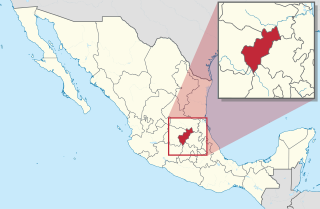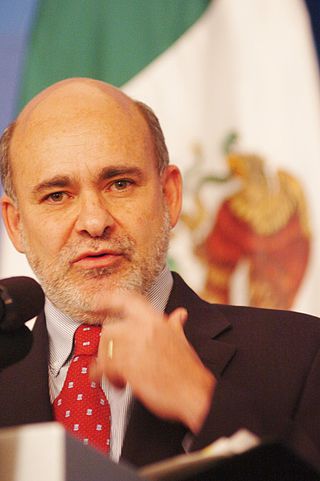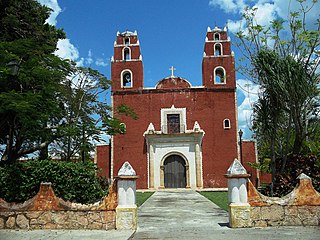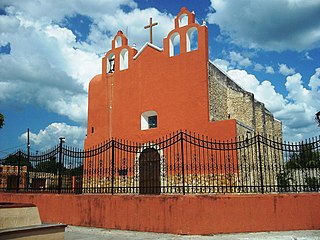
With a population of about 129 million in 2022, Mexico is the 10th most populated country in the world. It is the largest Spanish-speaking country in the world and the third-most populous country in the Americas after the United States and Brazil. Throughout most of the 20th century Mexico's population was characterized by rapid growth. Although this tendency has been reversed and average annual population growth over the last five years was less than 1%, the demographic transition is still in progress; Mexico still has a large youth cohort. The most populous city in the country is the capital, Mexico City, with a population of 8.9 million (2016), and its metropolitan area is also the most populated with 20.1 million (2010). Approximately 50% of the population lives in one of the 55 large metropolitan areas in the country. In total, about 78.84% of the population of the country lives in urban areas, and only about 21.16% in rural ones.

Coahuila, formally Coahuila de Zaragoza, officially the Free and Sovereign State of Coahuila de Zaragoza, is one of the 32 states of Mexico.

Querétaro is a state in North Central Mexico, divided into 18 municipalities. According to the 2020 Mexican Census, it is the twenty-first most populated state out of thirty-two with 2,368,467 inhabitants and the sixth smallest by land area spanning 11,690.6 square kilometres (4,513.8 sq mi). The largest municipality by population is Querétaro, with 1,049,777 residents, while the smallest is San Joaquín with 8,359 residents. The largest municipality by land area is Cadereyta de Montes, with an area of 1,347.40 km2 (520.23 sq mi), and the smallest is Corregidora with 234.90 km2 (90.70 sq mi). The newest municipalities are Ezequiel Montes, Pedro Escobedo and San Joaquín, established in 1941.
Pedro Carlos Aspe Armella is a Mexican economist. He served as secretary of finance in the cabinet of Carlos Salinas de Gortari, where he successfully renegotiated foreign debt, gave autonomy to the central bank and promoted a controversial privatization plan.

The National Institute of Statistics and Geography is an autonomous agency of the Mexican Government dedicated to coordinate the National System of Statistical and Geographical Information of the country. It was created on January 25, 1983, by presidential decree of Miguel de la Madrid.
Valle de Santiago is a municipio (municipality) in the Mexican state of Guanajuato, and also the name of its largest township and cabecera municipal. The municipality is located in the southern portion of the state in the Bajío region of central Mexico, and has an area of some 820.1 square kilometres (316.6 sq mi). The city of Valle de Santiago lies at an elevation of 1,744 metres (5,722 ft) in the east-central part of the municipality, approximately 90 kilometres (56 mi) south of the state capital, Guanajuato.

The International Cartographic Association (ICA), is an organization formed of national member organizations, to provide a forum for issues and techniques in cartography and geographic information science (GIScience). ICA was founded on June 9, 1959, in Bern, Switzerland. The first General Assembly was held in Paris in 1961. The mission of the International Cartographic Association is to promote the disciplines and professions of cartography and GIScience in an international context. To achieve these aims, the ICA works with national and international governmental and commercial bodies, and with other international scientific societies.

Eduardo Sojo Garza-Aldape is a Mexican economist. He served as chief economic advisor to President Vicente Fox and as Secretary of Economy in the cabinet of President Felipe Calderón since December 1, 2006 to August 6, 2008.
Guadalupe Victoria Municipality is a municipality in the Mexican state of Puebla. According to the National Statistics Institute (INEGI), it had a population of 15,041 inhabitants in the 2005 census. Its total area is 239.83 km². It is named after Guadalupe Victoria, the first president of Mexico.

Carlos M. Jarque Uribe is a Mexican economist, currently Executive Director of América Móvil and Board Member of the Leading Global Group in Citizen Services FCC. He has had a distinguished career in the private sector, in public service and in the academic world.

The North American Transportation Statistics Interchange, established in 1991, is a trilateral forum of government officials from transportation and statistical agencies of the United States, Canada, and Mexico. The purpose of the NATS Interchange is to share information on how to collect, analyze, and publish transportation data; to improve comparability among data programs of the three nations; and to provide North American statistics on transportation. To accomplish this, officials meet on an annual basis in the context of Interchange meetings being held alternately in Canada, Mexico, and the United States. Participating agencies include the U.S. Census Bureau, the U.S. Department of Transportation, the U.S. Army Corps of Engineers, Statistics Canada, Transport Canada, the Mexican Ministry of Communications and Transport (SCT), the Mexican Institute of Transportation (IMT), and the National Institute of Statistics and Geography (INEGI) of Mexico.
Lafragua Municipality is a municipality in the Mexican state of Puebla. According to the National Statistics Institute (INEGI), it had a population of 10,551 inhabitants in the 2005 census. By the 2010 census it had dropped to 7,767 inhabitants, 761 of whom lived in Saltillo, the municipal seat. Its total area is 128.85 km². The Saltillo name comes from the Nahuatl words Atlcholoa in atl, which means water, and Choloa, meaning drip. Therefore, means water that drips. The name Lafragua is in honor of José María Lafragua.
There is a large Guatemalan diaspora in Mexico. According to the 2010 census, there were 35,322 Guatemalan citizens living in Mexico, up from the 23,957 individuals counted in 2000.

Eloxochitlán is a municipality located in the southeastern part of the state of Puebla in Mexico. In the town there is a high rate of indigenous population: about 44%.
Hungarian Mexicans are Mexicans of Hungarian ancestry or origin. According to the 2020 census of INEGI, there are 369 Hungarians residing in Mexico.

Graciela Márquez Colín is a Mexican academic and economist. She held the position of Mexican Minister of Economy from 2018–2020, under President Andrés Manuel López Obrador. As of January 2021, she holds the position of Vice President of the Governing Board of the National Institute of Statistics and Geography (INEGI). She is set to occupy this role for an eight-year term, until December 2028. Previously she was Professor of Economic History at the El Colegio de Mexico in Mexico City where she was a full professor at the Centro de Estudios Historicos. She was also a Visiting Professor at the University of Chicago.

Temax is a town and the municipal seat of the Temax Municipality, Yucatán in Mexico. As of 2010, the town has a population of 6,239.

Buctzotz is a town and the municipal seat of the Buctzotz Municipality, Yucatán in Mexico. As of 2010, the town has a population of 7,515.

X-Can is a town in the Chemax Municipality, Yucatán in Mexico. As of 2010, the town has a population of 5,191.












